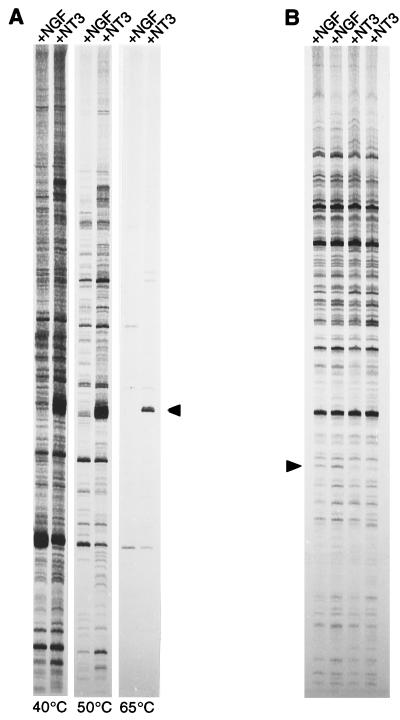Figure 3.
The RNA fingerprinting method. (A) Effect of the annealing temperature during the first two PCR cycles on the band pattern. cDNAs from NGF-treated (+NGF) and NT3-treated (+NT3) explants were compared. Changes were monitored on the basis of calretinin, known to be enriched in NT3-treated ganglia (see Table 1). Calretinin-specific primers were designed with the same length and G+C content as standard fingerprinting primers. The calretinin band (arrowhead, size marker was generated by amplifying a calretinin plasmid) was the predominant product at 65°C. Lowering the annealing temperature of the first two cycles to 40°C or 50°C allowed the primers to anneal less specifically, thus increasing the number of bands. In the final protocol 50°C was used. (B) Representative example of a fingerprint prepared with the final protocol. Routinely, two independent RNAs from NGF-treated explants were compared with two independent RNAs from NT3-treated explants. The arrowhead indicates a cDNA that is more abundant in NGF-treated explants.

